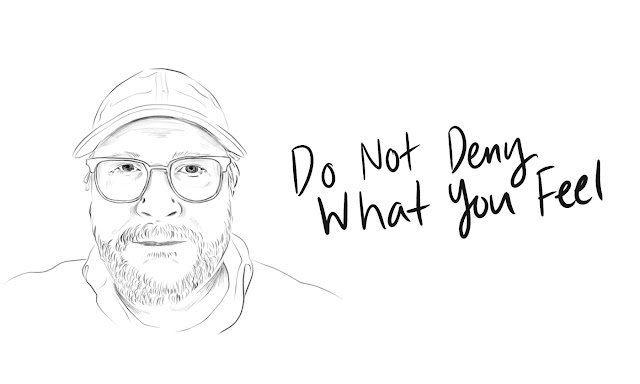As in past years, I’m limiting this list to northern North America for two reasons:
- Restricting this list geographically is in keeping with my specialization in plants native to northeastern North America.
- There are many more tropical plants, and plant extinctions, than I can manage.
In 2020, this paper:
Vascular plant extinction in the continental United States and Canada
caused me to expand my list from 6 to 59 species, including 7 extinct in the wild. The summary is terse, and grim:
Given the paucity of plant surveys in many areas, particularly prior to European settlement, the actual extinction rate of vascular plants is undoubtedly much higher than indicated here.
Extinct
- Agalinis caddoensis, Railroad near Shreveport, Louisiana. last observed 1913
- * Astilbe crenatiloba, Roan Mountain false goat’s beard, Roan Mountain, Tennessee, 1885
- Astragalus endopterus, near Cameron, Coconino County, Arizona. Last observed 1947
- Astragalus kentrophyta var. douglasii, Washington/Oregon?, 1883
- Astragalus robbinsii var. robbinsii, Vermont, 1894
- Atriplex tularensis, California, 1891
- Blephilia hirsuta var. glabrata, Manchester, Bennington County, ermont, 1932
- Boechera fruticosa, Yellowstone, Wyoming, 1899
- Brickellia chenopodina, Grant County, New Mexico, 1903
- Brickellia hinckleyi var. terlinguensis, Brewster County, Texas, 1937
- Calochortus indecorus, Sexton Mountain, Josephine County, Oregon, 1948
- Calochortus monanthus, Yreka, Siskiyou County, California, 1876
- Calystegia seium ssp. binghamiae, Santa Barbara, California
- Castilleja leschkeana, Point Reyes, Marin County, California, 1947
- Castilleja uliginosa, Pitkin Marsh, Sonoma County, California, 1984
- Cirsium praeteriens, Palo Alto, Santa Clara County, California, 1901
- Corispermum pallidum, Washington, 1931
- Crataegus austromontana, Sand Mountain region and Cumberland Mountains, Alabama and Tennessee, 1916
- Cryptantha aptera, Grand Junctino, mesa County Colorado, 1892
- Cryptantha hooveri, California, 1939
- Cryptantha insolita, north of Las Vegas, Nevada, 1942
- Dalea sabinalis, Texas, 1950s
- Digitaria filiformis var. laeviglumis, Hillsboro County, NH, 1931
- Diplacus traskiae, near Avalon, Santa Catalina Island, California, 1901
- Eleocharis brachycarpa, Tamaulipas, Mexico (1959) and Texas, 1834
- Elodea schweinitzii, New York and Pennsylvania, 1832
- Erigeron mariposanus, California, 1900
- Eriochloa michauxii var. simpsonii, Florida, 1966
- Govenia floridana, Miami-Dade County, Florida, 1964
- Hedeoma pilosa, Old Blue Mountain, Brewster County, Texas, 1940
- Helianthus nuttallii ssp. parishii, Orange County, California, 1937
- Helianthus praetermissus, Arizona (likely) or New Mexico, 1851
- Isocoma humilis, Washington County, Utah, 1971
- Juncus pervetus, Lewis Bay, West Yarmouth, Barnstable County, Massachusetts, 1927
- Lechea lakelae, Collier County, Florida, 1987
- Lycium verrucosum, Arroyo Cliffs, San Nicolas County, California, 1901
- Marshallia grandiflora, North Carolina, 1919
- Micranthemum micranthemoides, Mid-atlantic United States, 1941
- Monardella leucocephala, California, 1941
- Monardella pringlei, San Bernardino County, California, 1941
- * Narthecium montanum, Appalachian Yellow Asphodel, East Flat Rock Bog, Henderson County, North Carolina, 1919
- * Neomacounia nitida, Macoun’s shining moss, Belleville, Ontario, 1864
- * Orbexilum macrophyllum, bigleaf scurfpea, Polk County, North Carolina, 1899
- * Orbexilum stipulatum, large-stipule leather-root, Falls-of-the-Ohio scurfpea, Rock Island, Falls of the Ohio, KY, 1881
- Paronychia maccartii, Rio Grande Plains, Webb County, Texas, 1962
- Plagiobothrys lamprocarpus, Grants Pass, Josephine County, Oregon, 1921
- Plagiobothrys lithocaryus, Mayacamas Mountains, California, 1899
- Plagiobothrys mollis var. vestitus, Petaluma, Sonoma County, California, 1880
- Polygonatum biflorum var. melleum, Lake St. Clair, north of Detroit, Michigan and Windsor, Ontario, 1937
- Potentilla multijuga, South Coast Ballona Marsh, Los Angeles County, California, 1893
- Potentilla uliginosa, Cunningham Marsh, Sonoma County, California, 1947
- Proboscidea spicata, Rio Grande, Texas, 1967
- Quercus tardifolia, Chisos Mountains, Brewster County, Texas, 2007
- Ribes divaricatum var. parishii, California, 1980
- Rumex tomentellus, Willow Creek, Mogollon Mountains, Catron County, New Mexico, 1954
- Sesuvium trianthemoides, Kenedy County, Texas, 1947
- Sphaeralcea procera, Deming, Luna County, New Mexico, 1943
- Tephrosia angustissima var. angustissima, Pine Rocklands, Florida, 1947 (1985?)
- * Thismia americana, banded trinity, Lake Calumet, Cook County, Illinois, 1916
Extinct in the wild (IUCN Red List code EW)
- Arctostaphylos franciscana, Central Coast, San Francisco County, California. Last observed in the wild 2009
- Crataegus delawarensis, Delaware, 1903
- Crataegus fecunda, Arkansas, Illinois, Kentucky, Missouri, 1930s
- Crataegus lanuginosa, Webb City, Jasper County, Missouri, 1957
- Euonymous atropurpurea var. cheatumii, Dallas County, Texas, 1944
- * Franklinia alatamaha, Franklin Tree
- Prunus maritima var. gravesii, beach plum, groton, New London County, Connecticut, 2000
Related Content
Extinct Plants of northern North America, 2014-11-30
Links
IUCN Red List: List of species extinct in the wild
Extinct and Extirpated Plants from Oregon (PDF, 5 pp)


























